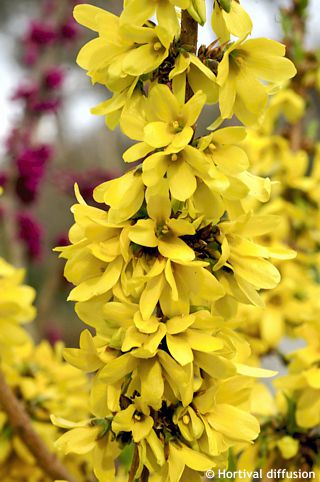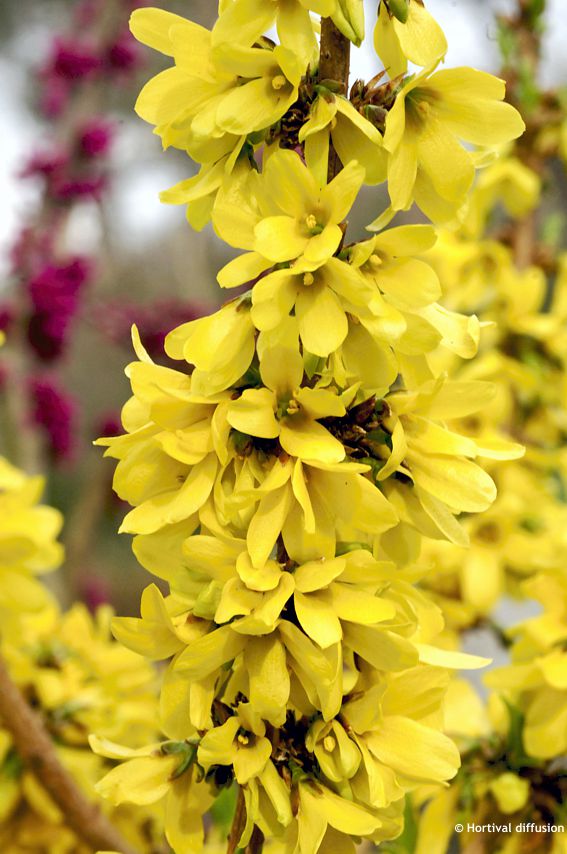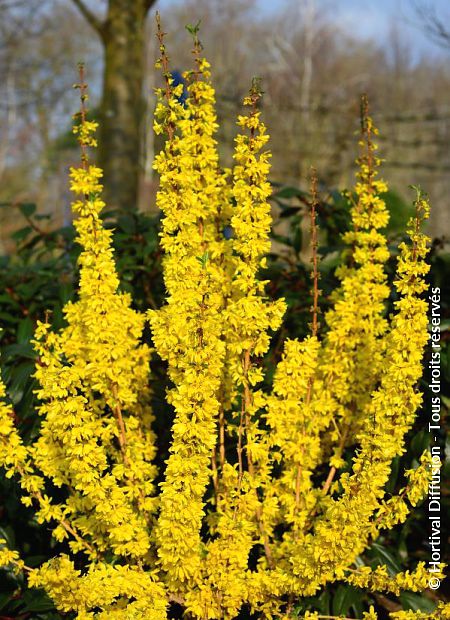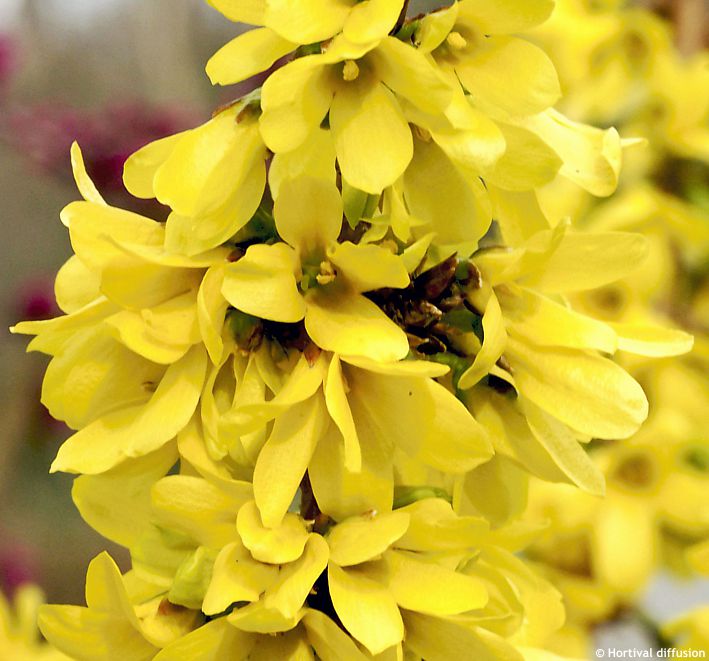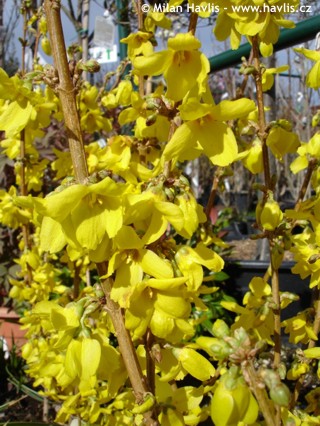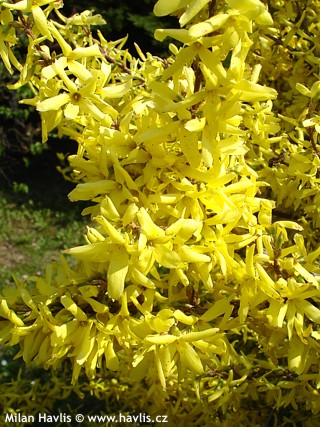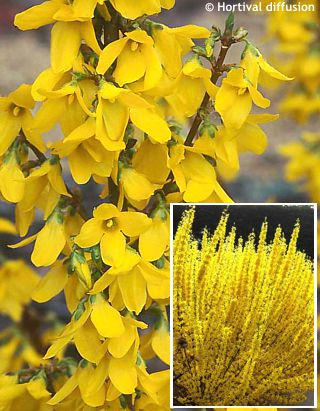Forsythia x intermedia 'Minfor6' MIKADOR® golden bell
Forsythia
Golden bell is one of the earliest blooming shrubs in Central European spring. Though considered one of the most usual, perhaps boring and omnipresent shrubs, once it puts up its millions of vivid yellow flowers it cheers up many tired faces. Forsythia x intermedia is a hybrid between F. suspensa x F. viridissima.
MIKADOR® is a French introduction of golden bell from 2012. It exhibits compact growth with upright, strong branches, and rich, sulphur yellow flowers. Deciduous leaves are lanceolate, mid-green, serrated. The bark is yellow-green to yellow-brown. It can be pruned almost any time from spring until early autumn. However, the best time is after flowering. This forsythia can be cut even into old wood and readily regenerates but needs no pruning at all as its shape is quite regular, forming an open V shape. It grows considerably slower than most older varieties.
It is widely soil adaptable and easy to grow. It will tolerate poor soil, and both temporary drought or flooding. Fully hardy to min. -29°C (USDA zone 5), but withstands short spells of deeper frost.
Last update 24-04-2019
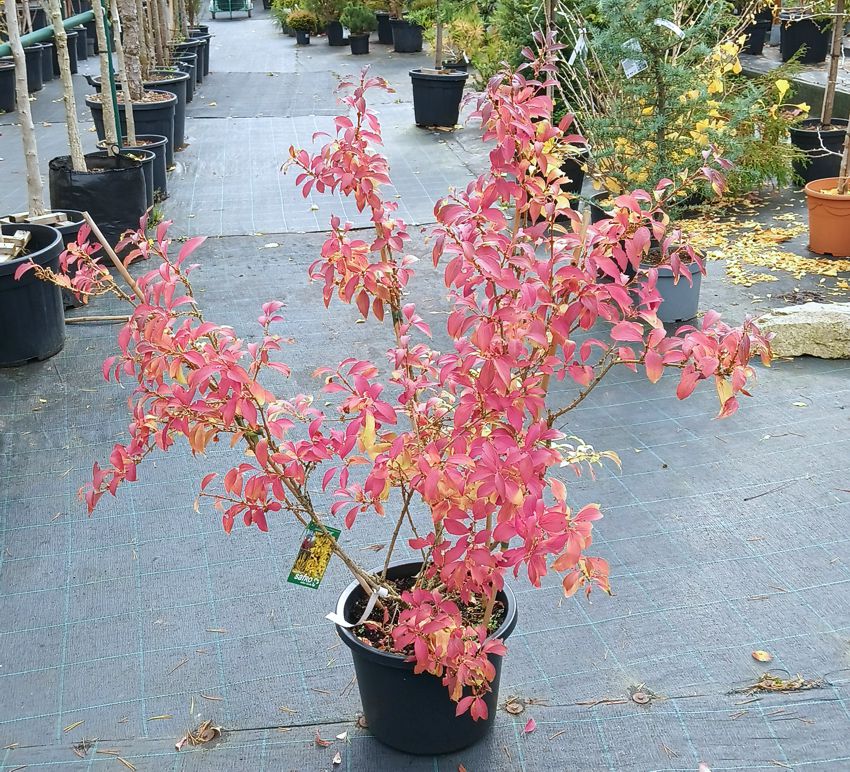
1 181,5 Kč

1 181,5 Kč
Goods are shipped all over Europe. For Russia and U.K. and for further details please read about SHIPPING OPTIONS HERE.
Are you interested in a serious discount for orders NOV-FEB? Check your options here.
THE PRICES INCLUDE VAT of 15%. For quick conversion you can use 1 CZK = approx. 0.04 EUR
- STANDARD QUALITY - Plants of this group are 1st class quality with number of branches and overall density adequate to their size and age, considering they were container grown.
- DE LUXE QUALITY - This label guarantees a luxurious quality of manually selected plants that, compared to their height and age, are exceptionally dense and beautiful.
- EXTRA - These plants are usually mature and bigger specimens with exceptional overall appearance.
- STANDARD (as described in the plant form) means a tree with a trunk of 190-210 cm and a crown at the top, unless specified differently. The commercial size for trees is their girth measured in the height of 1m from ground.
- HOBBY - These plants are of the same quality as our standard-quality plants but younger and therefore cheaper.
- SHRUB - a woody plant with branches growing bushy from the ground level.
- HALF-STANDARD or MINI-STANDARD - a small tree with shorter trunk, its size is usually specified.
- FEATHERED - These are trees with branches growing already from the base of the trunk and up along the stem.
- GRASSES and PERENNIALS - Sizes given usually read the diameter of the pot or the clump, as specified.

































